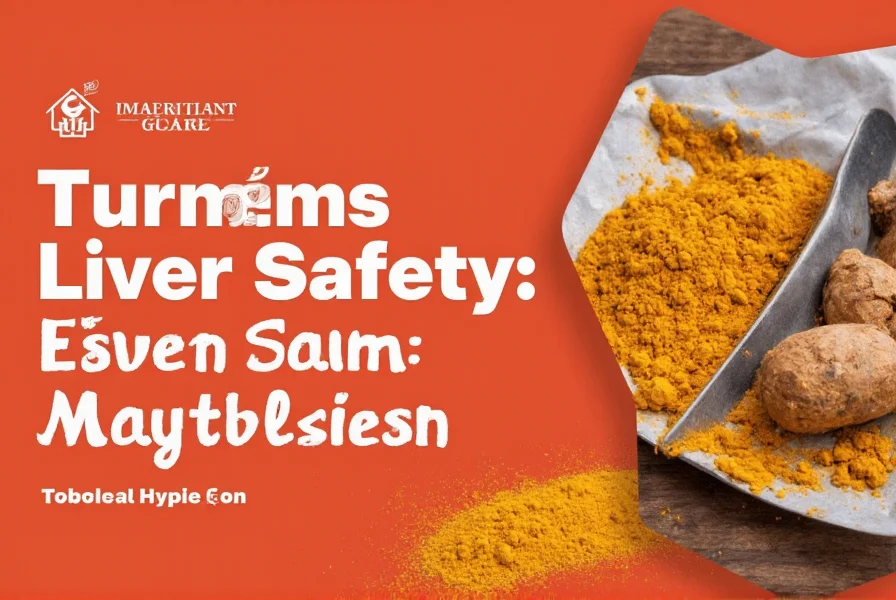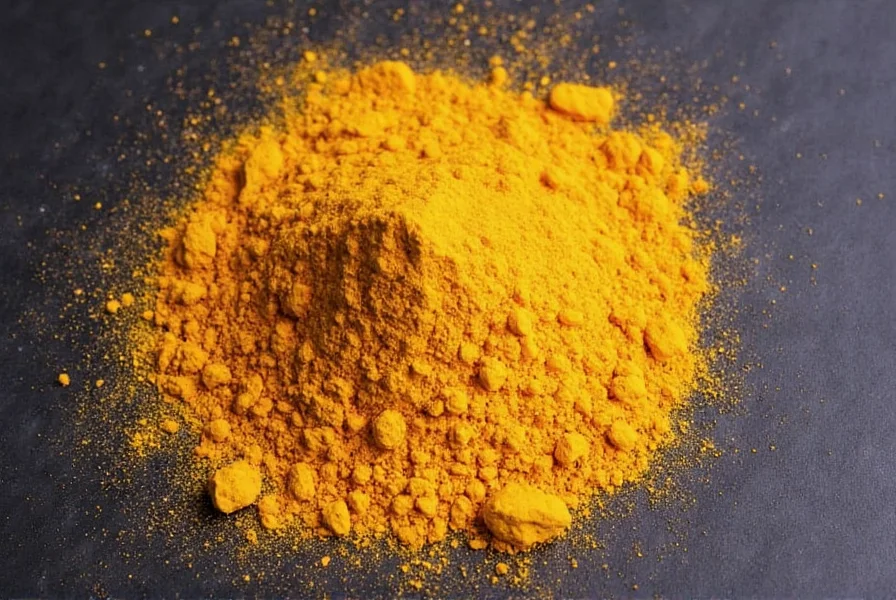As turmeric supplements grow increasingly popular for inflammation and joint health, concerns about potential liver effects have emerged. This comprehensive review examines the scientific evidence behind turmeric liver safety concerns, separating fact from speculation while providing practical guidance for safe usage.
Understanding Turmeric and Its Active Components
Turmeric (Curcuma longa), a vibrant yellow spice central to many culinary traditions, contains curcuminoids as its primary bioactive compounds. Curcumin represents about 2-8% of raw turmeric by weight and constitutes approximately 77% of the curcuminoid complex. While culinary use typically delivers 50-100mg of curcumin daily, supplements often provide 500-2,000mg—creating significantly different exposure levels.
The distinction between dietary turmeric consumption and concentrated supplement intake is crucial when evaluating liver safety concerns. Most documented cases of liver issues relate to supplement use rather than culinary consumption.
Scientific Evidence on Turmeric and Liver Health
Research presents a complex picture of turmeric's relationship with liver function. Multiple studies suggest potential hepatoprotective benefits:
| Study Type | Findings | Reference |
|---|---|---|
| Animal research | Reduced liver damage markers in toxin-exposed subjects | Journal of Medicinal Food, 2018 |
| Human clinical trial | Improved liver enzyme levels in NAFLD patients | World Journal of Gastroenterology, 2020 |
| Systematic review | Anti-inflammatory effects potentially beneficial for liver health | Nutrients, 2021 |
However, case reports have documented instances of turmeric-related liver injury. A 2022 review in Food and Chemical Toxicology analyzed 32 case reports of suspected turmeric-induced liver injury. Key findings included:
- Most cases involved daily doses exceeding 1,500mg of curcumin
- Symptoms typically appeared within 1-3 months of starting supplementation
- Liver enzyme elevations were generally reversible after discontinuation
- No clear dose-response relationship was established
Researchers concluded these reactions likely represent idiosyncratic responses rather than predictable dose-dependent toxicity—a pattern consistent with many herbal supplement-related liver issues.

Identifying Those at Potential Risk
Certain populations may face elevated turmeric liver safety concerns:
Pre-existing Liver Conditions
Individuals with existing liver disease, including non-alcoholic fatty liver disease (NAFLD), hepatitis, or cirrhosis, should exercise caution. While some studies suggest potential benefits, the unpredictable nature of idiosyncratic reactions warrants medical supervision.
Medication Interactions
Turmeric may interact with medications metabolized by cytochrome P450 enzymes, potentially affecting liver processing of these drugs. Notable interactions include:
- Anticoagulants (increased bleeding risk)
- Certain chemotherapy drugs
- Diabetes medications (enhanced effects)
Genetic Factors
Emerging research suggests genetic variations in drug-metabolizing enzymes may predispose certain individuals to adverse reactions. This explains why liver issues appear unpredictable and affect only a small subset of users.
Practical Safety Guidelines for Turmeric Use
Based on current evidence, these recommendations address turmeric supplement liver safety concerns while preserving potential benefits:
Differentiate Culinary vs. Supplement Use
Regular culinary use of turmeric in cooking (approximately 1-3 grams daily) shows no significant liver safety concerns in population studies. The primary concerns relate to concentrated supplements delivering substantially higher curcumin doses.
Start Low and Monitor
When beginning supplementation:
- Begin with lower doses (500mg daily)
- Consider intermittent use rather than continuous daily intake
- Monitor for symptoms like jaundice, dark urine, or abdominal discomfort
- Consider periodic liver enzyme testing if using long-term
Quality Matters
Supplement quality significantly impacts turmeric liver safety profile. Look for products with:
- Third-party testing verification (USP, NSF, ConsumerLab)
- Clear labeling of curcuminoid content
- Reputable manufacturers with transparent sourcing

When to Consult a Healthcare Provider
Individuals should seek medical advice regarding turmeric liver safety concerns if they:
- Have diagnosed liver disease
- Experience symptoms like persistent fatigue, nausea, or yellowing skin
- Take medications with potential interactions
- Plan to use high-dose supplements long-term
Healthcare providers can assess individual risk factors and potentially monitor liver function through blood tests during supplementation.
Conclusion: Balancing Benefits and Safety
The relationship between turmeric and liver health represents a nuanced picture. While culinary use remains generally recognized as safe, high-dose supplementation requires thoughtful consideration of individual risk factors. Current evidence suggests turmeric liver safety concerns primarily affect a small subset of users, often through unpredictable idiosyncratic reactions rather than predictable dose-dependent toxicity.
Consumers can mitigate risks by choosing quality products, starting with lower doses, monitoring for adverse effects, and consulting healthcare providers when appropriate. As research continues to evolve, staying informed about the latest evidence remains essential for making educated decisions about turmeric supplementation.
Frequently Asked Questions
Can turmeric supplements cause liver damage?
While rare, there have been documented cases of liver injury associated with high-dose turmeric supplements. Most reported cases involve idiosyncratic reactions rather than predictable dose-dependent toxicity. Culinary use of turmeric as a spice shows no significant liver safety concerns in population studies.
How much turmeric is safe for liver health?
Culinary use of 1-3 grams of turmeric daily (providing approximately 50-100mg of curcumin) is generally considered safe. For supplements, starting with 500mg of curcumin daily and monitoring for adverse effects is prudent. Individuals with liver conditions should consult healthcare providers before supplementing.
What are signs of turmeric-related liver problems?
Symptoms may include jaundice (yellowing of skin or eyes), dark urine, persistent fatigue, abdominal pain, nausea, and loss of appetite. These symptoms typically appear within 1-3 months of starting supplementation. If experienced, discontinue use and consult a healthcare provider immediately.
Does black pepper in turmeric supplements affect liver safety?
Piperine (from black pepper) enhances curcumin absorption but may also affect how the liver processes substances. While no direct evidence links piperine to increased liver risk with turmeric, the combination creates higher curcumin exposure. Those with liver concerns might consider piperine-free formulations.
Can I take turmeric if I have fatty liver disease?
Some studies suggest potential benefits of turmeric for non-alcoholic fatty liver disease (NAFLD), but individual responses vary. If considering supplementation, consult your healthcare provider first. They may recommend starting with low doses while monitoring liver enzymes to address any turmeric liver safety concerns specific to your condition.










 浙公网安备
33010002000092号
浙公网安备
33010002000092号 浙B2-20120091-4
浙B2-20120091-4